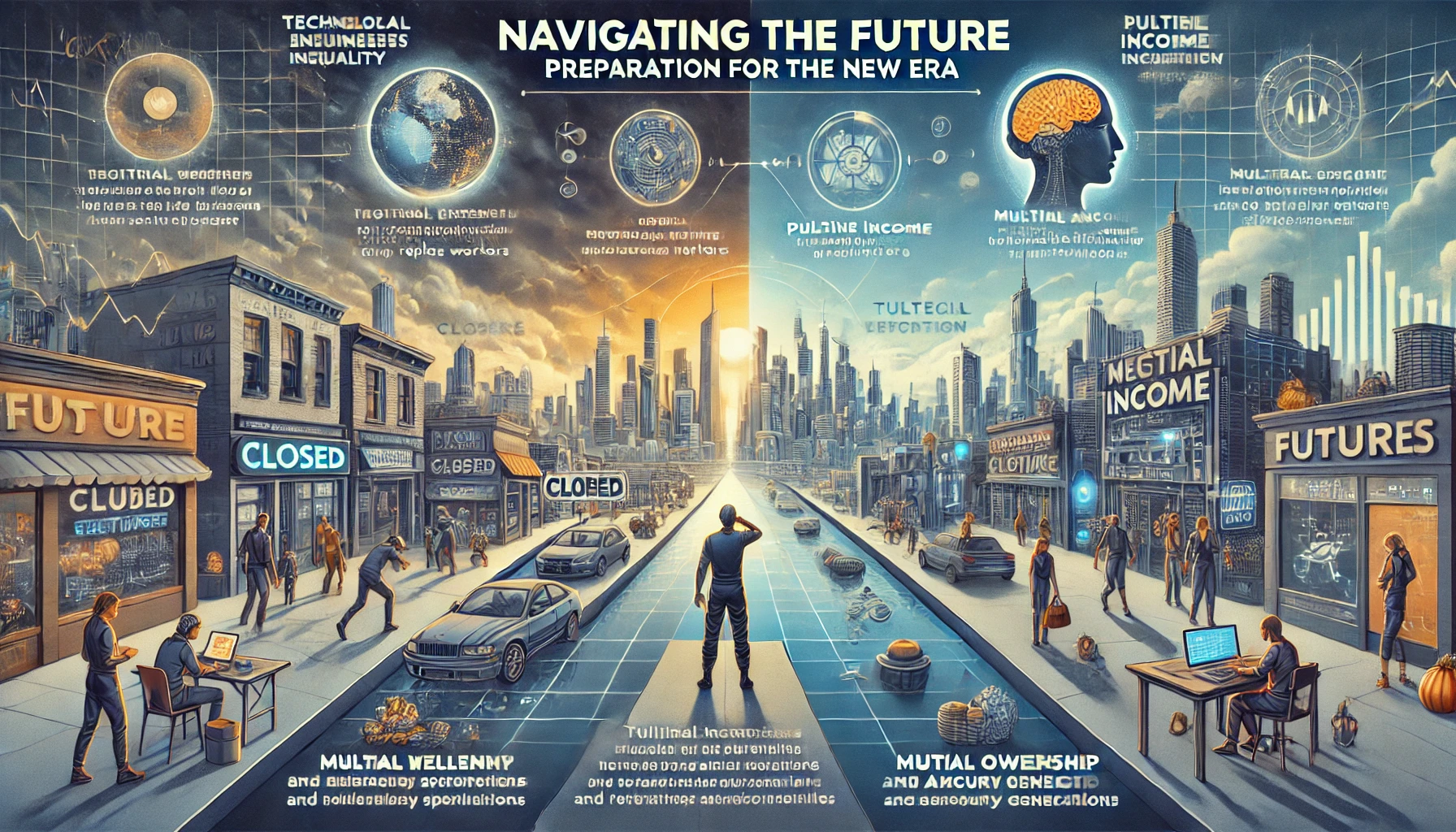“Wikipedia เผยทราฟฟิกลดฮวบ – คนหันไปดูคลิปกับใช้ AI ตอบแทนการคลิก”
Wikipedia ซึ่งเคยเป็นแหล่งข้อมูลอันดับหนึ่งของโลก กำลังเผชิญกับการเปลี่ยนแปลงครั้งใหญ่ในพฤติกรรมผู้ใช้ โดย Marshall Miller จาก Wikimedia Foundation เผยว่า จำนวนผู้เข้าชมลดลง 8% เมื่อเทียบกับปีก่อน และมีแนวโน้มลดลงต่อเนื่อง
สาเหตุหลักคือการเปลี่ยนวิธี “ค้นหาความรู้” ของผู้คน โดยเฉพาะจากสองกระแสใหญ่:
1️⃣ AI search summaries – เครื่องมือค้นหาหลายเจ้าตอนนี้ใช้ AI สรุปคำตอบให้ทันทีโดยไม่ต้องคลิกเข้าเว็บ เช่น Google’s SGE หรือ Bing Copilot ทำให้ผู้ใช้ได้คำตอบจาก Wikipedia โดยไม่เคยเข้า Wikipedia จริง ๆ
2️⃣ Social video platforms – คนรุ่นใหม่หันไปใช้ TikTok, YouTube Shorts และ Instagram Reels เพื่อหาความรู้แบบเร็ว ๆ แทนการอ่านบทความยาว ๆ บนเว็บ
Wikipedia เองเคยทดลองใช้ AI สรุปบทความ แต่ต้องหยุดไปเพราะชุมชนผู้แก้ไขไม่พอใจเรื่องความแม่นยำและการควบคุมเนื้อหา
สิ่งที่น่ากังวลคือ หากคนไม่เข้า Wikipedia โดยตรง ก็จะมีผู้แก้ไขน้อยลง และยอดบริจาคก็ลดลงตามไปด้วย ซึ่งอาจกระทบต่อคุณภาพและความยั่งยืนของเนื้อหาในระยะยาว
Miller จึงเรียกร้องให้บริษัท AI และแพลตฟอร์มค้นหา “ส่งคนกลับเข้า Wikipedia” และกำลังพัฒนา framework ใหม่เพื่อให้การอ้างอิงเนื้อหาจาก Wikipedia มีความชัดเจนและเป็นธรรมมากขึ้น
สถานการณ์ปัจจุบันของ Wikipedia
จำนวนผู้เข้าชมลดลง 8% เมื่อเทียบกับปีก่อน
การลดลงเกิดหลังจากปรับระบบตรวจจับ bot ใหม่
พบว่าทราฟฟิกสูงช่วงพฤษภาคม–มิถุนายนมาจาก bot ที่หลบการตรวจจับ
สาเหตุของการลดลง
AI search summaries ให้คำตอบโดยไม่ต้องคลิกเข้าเว็บ
คนรุ่นใหม่หันไปใช้ social video เพื่อหาความรู้
พฤติกรรมการค้นหาข้อมูลเปลี่ยนจาก “อ่าน” เป็น “ดู” และ “ฟัง”
ผลกระทบต่อ Wikipedia
ผู้เข้าชมน้อยลง = ผู้แก้ไขน้อยลง
ยอดบริจาคลดลงตามจำนวนผู้ใช้
เสี่ยงต่อคุณภาพและความยั่งยืนของเนื้อหา
ความเข้าใจของผู้ใช้ต่อแหล่งที่มาของข้อมูลลดลง
การตอบสนองจาก Wikimedia Foundation
เรียกร้องให้ AI และ search engine ส่งคนกลับเข้า Wikipedia
พัฒนา framework ใหม่สำหรับการอ้างอิงเนื้อหา
มีทีมงาน 2 ทีมช่วยผลักดัน Wikipedia สู่กลุ่มผู้ใช้ใหม่
หยุดการใช้ AI สรุปบทความหลังชุมชนไม่พอใจ
ข้อควรระวังและคำเตือน
หากคนไม่เข้า Wikipedia โดยตรง อาจไม่รู้ว่าเนื้อหามาจากไหน
การลดจำนวนผู้แก้ไขอาจทำให้เนื้อหาล้าสมัยหรือผิดพลาด
การพึ่งพา AI summaries อาจลดความหลากหลายของมุมมอง
หากยอดบริจาคลดลง อาจกระทบต่อการดำเนินงานของ Wikimedia
การใช้ social video เพื่อหาความรู้อาจทำให้ข้อมูลผิดพลาดแพร่กระจายง่ายขึ้น
https://techcrunch.com/2025/10/18/wikipedia-says-traffic-is-falling-due-to-ai-search-summaries-and-social-video/
Wikipedia ซึ่งเคยเป็นแหล่งข้อมูลอันดับหนึ่งของโลก กำลังเผชิญกับการเปลี่ยนแปลงครั้งใหญ่ในพฤติกรรมผู้ใช้ โดย Marshall Miller จาก Wikimedia Foundation เผยว่า จำนวนผู้เข้าชมลดลง 8% เมื่อเทียบกับปีก่อน และมีแนวโน้มลดลงต่อเนื่อง
สาเหตุหลักคือการเปลี่ยนวิธี “ค้นหาความรู้” ของผู้คน โดยเฉพาะจากสองกระแสใหญ่:
1️⃣ AI search summaries – เครื่องมือค้นหาหลายเจ้าตอนนี้ใช้ AI สรุปคำตอบให้ทันทีโดยไม่ต้องคลิกเข้าเว็บ เช่น Google’s SGE หรือ Bing Copilot ทำให้ผู้ใช้ได้คำตอบจาก Wikipedia โดยไม่เคยเข้า Wikipedia จริง ๆ
2️⃣ Social video platforms – คนรุ่นใหม่หันไปใช้ TikTok, YouTube Shorts และ Instagram Reels เพื่อหาความรู้แบบเร็ว ๆ แทนการอ่านบทความยาว ๆ บนเว็บ
Wikipedia เองเคยทดลองใช้ AI สรุปบทความ แต่ต้องหยุดไปเพราะชุมชนผู้แก้ไขไม่พอใจเรื่องความแม่นยำและการควบคุมเนื้อหา
สิ่งที่น่ากังวลคือ หากคนไม่เข้า Wikipedia โดยตรง ก็จะมีผู้แก้ไขน้อยลง และยอดบริจาคก็ลดลงตามไปด้วย ซึ่งอาจกระทบต่อคุณภาพและความยั่งยืนของเนื้อหาในระยะยาว
Miller จึงเรียกร้องให้บริษัท AI และแพลตฟอร์มค้นหา “ส่งคนกลับเข้า Wikipedia” และกำลังพัฒนา framework ใหม่เพื่อให้การอ้างอิงเนื้อหาจาก Wikipedia มีความชัดเจนและเป็นธรรมมากขึ้น
สถานการณ์ปัจจุบันของ Wikipedia
จำนวนผู้เข้าชมลดลง 8% เมื่อเทียบกับปีก่อน
การลดลงเกิดหลังจากปรับระบบตรวจจับ bot ใหม่
พบว่าทราฟฟิกสูงช่วงพฤษภาคม–มิถุนายนมาจาก bot ที่หลบการตรวจจับ
สาเหตุของการลดลง
AI search summaries ให้คำตอบโดยไม่ต้องคลิกเข้าเว็บ
คนรุ่นใหม่หันไปใช้ social video เพื่อหาความรู้
พฤติกรรมการค้นหาข้อมูลเปลี่ยนจาก “อ่าน” เป็น “ดู” และ “ฟัง”
ผลกระทบต่อ Wikipedia
ผู้เข้าชมน้อยลง = ผู้แก้ไขน้อยลง
ยอดบริจาคลดลงตามจำนวนผู้ใช้
เสี่ยงต่อคุณภาพและความยั่งยืนของเนื้อหา
ความเข้าใจของผู้ใช้ต่อแหล่งที่มาของข้อมูลลดลง
การตอบสนองจาก Wikimedia Foundation
เรียกร้องให้ AI และ search engine ส่งคนกลับเข้า Wikipedia
พัฒนา framework ใหม่สำหรับการอ้างอิงเนื้อหา
มีทีมงาน 2 ทีมช่วยผลักดัน Wikipedia สู่กลุ่มผู้ใช้ใหม่
หยุดการใช้ AI สรุปบทความหลังชุมชนไม่พอใจ
ข้อควรระวังและคำเตือน
หากคนไม่เข้า Wikipedia โดยตรง อาจไม่รู้ว่าเนื้อหามาจากไหน
การลดจำนวนผู้แก้ไขอาจทำให้เนื้อหาล้าสมัยหรือผิดพลาด
การพึ่งพา AI summaries อาจลดความหลากหลายของมุมมอง
หากยอดบริจาคลดลง อาจกระทบต่อการดำเนินงานของ Wikimedia
การใช้ social video เพื่อหาความรู้อาจทำให้ข้อมูลผิดพลาดแพร่กระจายง่ายขึ้น
https://techcrunch.com/2025/10/18/wikipedia-says-traffic-is-falling-due-to-ai-search-summaries-and-social-video/
📉 “Wikipedia เผยทราฟฟิกลดฮวบ – คนหันไปดูคลิปกับใช้ AI ตอบแทนการคลิก”
Wikipedia ซึ่งเคยเป็นแหล่งข้อมูลอันดับหนึ่งของโลก กำลังเผชิญกับการเปลี่ยนแปลงครั้งใหญ่ในพฤติกรรมผู้ใช้ โดย Marshall Miller จาก Wikimedia Foundation เผยว่า จำนวนผู้เข้าชมลดลง 8% เมื่อเทียบกับปีก่อน และมีแนวโน้มลดลงต่อเนื่อง
สาเหตุหลักคือการเปลี่ยนวิธี “ค้นหาความรู้” ของผู้คน โดยเฉพาะจากสองกระแสใหญ่:
1️⃣ AI search summaries – เครื่องมือค้นหาหลายเจ้าตอนนี้ใช้ AI สรุปคำตอบให้ทันทีโดยไม่ต้องคลิกเข้าเว็บ เช่น Google’s SGE หรือ Bing Copilot ทำให้ผู้ใช้ได้คำตอบจาก Wikipedia โดยไม่เคยเข้า Wikipedia จริง ๆ
2️⃣ Social video platforms – คนรุ่นใหม่หันไปใช้ TikTok, YouTube Shorts และ Instagram Reels เพื่อหาความรู้แบบเร็ว ๆ แทนการอ่านบทความยาว ๆ บนเว็บ
Wikipedia เองเคยทดลองใช้ AI สรุปบทความ แต่ต้องหยุดไปเพราะชุมชนผู้แก้ไขไม่พอใจเรื่องความแม่นยำและการควบคุมเนื้อหา
สิ่งที่น่ากังวลคือ หากคนไม่เข้า Wikipedia โดยตรง ก็จะมีผู้แก้ไขน้อยลง และยอดบริจาคก็ลดลงตามไปด้วย ซึ่งอาจกระทบต่อคุณภาพและความยั่งยืนของเนื้อหาในระยะยาว
Miller จึงเรียกร้องให้บริษัท AI และแพลตฟอร์มค้นหา “ส่งคนกลับเข้า Wikipedia” และกำลังพัฒนา framework ใหม่เพื่อให้การอ้างอิงเนื้อหาจาก Wikipedia มีความชัดเจนและเป็นธรรมมากขึ้น
✅ สถานการณ์ปัจจุบันของ Wikipedia
➡️ จำนวนผู้เข้าชมลดลง 8% เมื่อเทียบกับปีก่อน
➡️ การลดลงเกิดหลังจากปรับระบบตรวจจับ bot ใหม่
➡️ พบว่าทราฟฟิกสูงช่วงพฤษภาคม–มิถุนายนมาจาก bot ที่หลบการตรวจจับ
✅ สาเหตุของการลดลง
➡️ AI search summaries ให้คำตอบโดยไม่ต้องคลิกเข้าเว็บ
➡️ คนรุ่นใหม่หันไปใช้ social video เพื่อหาความรู้
➡️ พฤติกรรมการค้นหาข้อมูลเปลี่ยนจาก “อ่าน” เป็น “ดู” และ “ฟัง”
✅ ผลกระทบต่อ Wikipedia
➡️ ผู้เข้าชมน้อยลง = ผู้แก้ไขน้อยลง
➡️ ยอดบริจาคลดลงตามจำนวนผู้ใช้
➡️ เสี่ยงต่อคุณภาพและความยั่งยืนของเนื้อหา
➡️ ความเข้าใจของผู้ใช้ต่อแหล่งที่มาของข้อมูลลดลง
✅ การตอบสนองจาก Wikimedia Foundation
➡️ เรียกร้องให้ AI และ search engine ส่งคนกลับเข้า Wikipedia
➡️ พัฒนา framework ใหม่สำหรับการอ้างอิงเนื้อหา
➡️ มีทีมงาน 2 ทีมช่วยผลักดัน Wikipedia สู่กลุ่มผู้ใช้ใหม่
➡️ หยุดการใช้ AI สรุปบทความหลังชุมชนไม่พอใจ
‼️ ข้อควรระวังและคำเตือน
⛔ หากคนไม่เข้า Wikipedia โดยตรง อาจไม่รู้ว่าเนื้อหามาจากไหน
⛔ การลดจำนวนผู้แก้ไขอาจทำให้เนื้อหาล้าสมัยหรือผิดพลาด
⛔ การพึ่งพา AI summaries อาจลดความหลากหลายของมุมมอง
⛔ หากยอดบริจาคลดลง อาจกระทบต่อการดำเนินงานของ Wikimedia
⛔ การใช้ social video เพื่อหาความรู้อาจทำให้ข้อมูลผิดพลาดแพร่กระจายง่ายขึ้น
https://techcrunch.com/2025/10/18/wikipedia-says-traffic-is-falling-due-to-ai-search-summaries-and-social-video/
0 Comments
0 Shares
180 Views
0 Reviews









